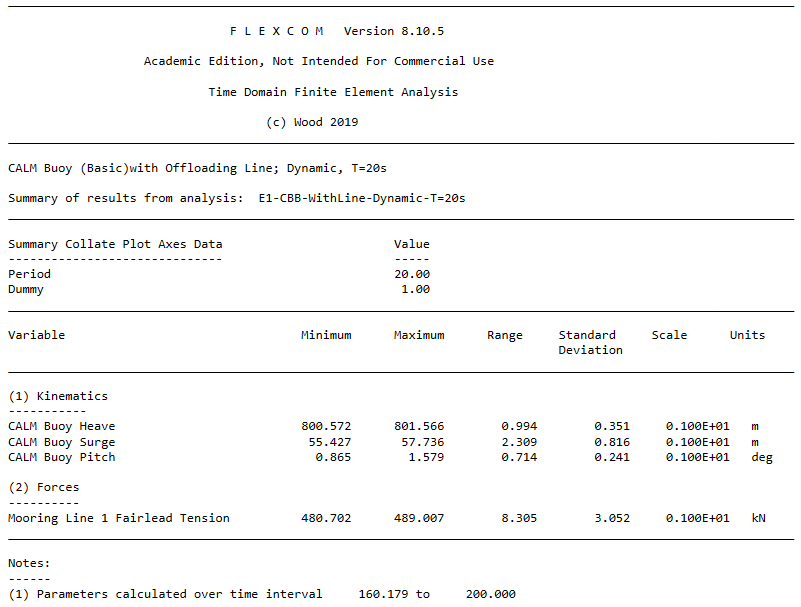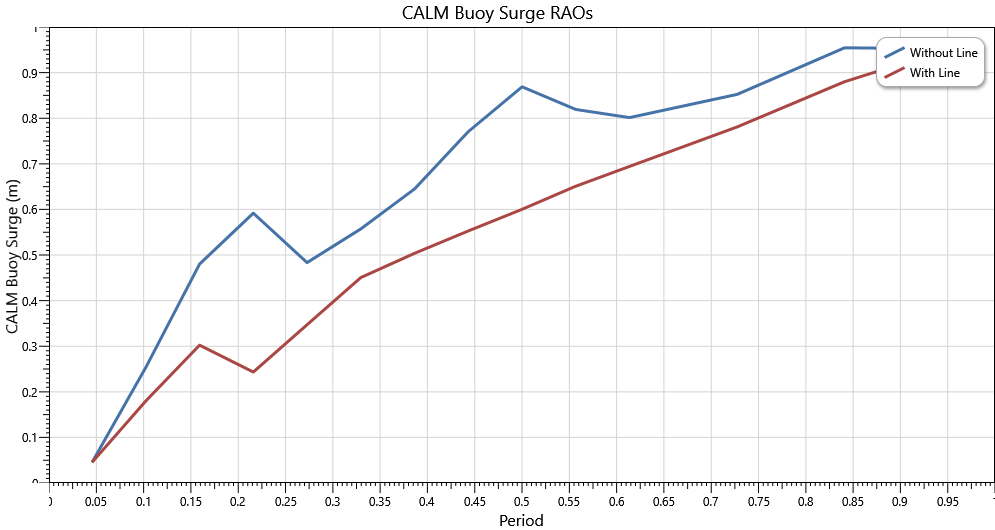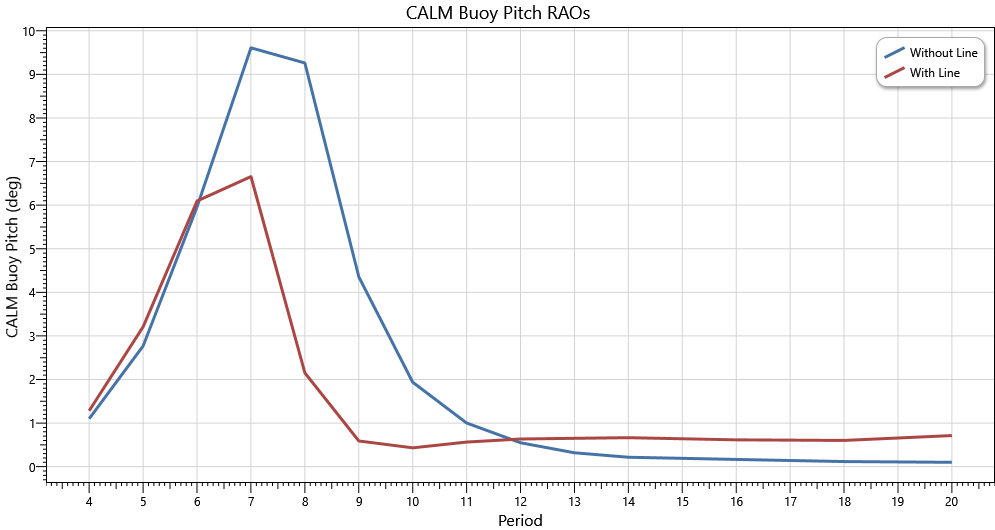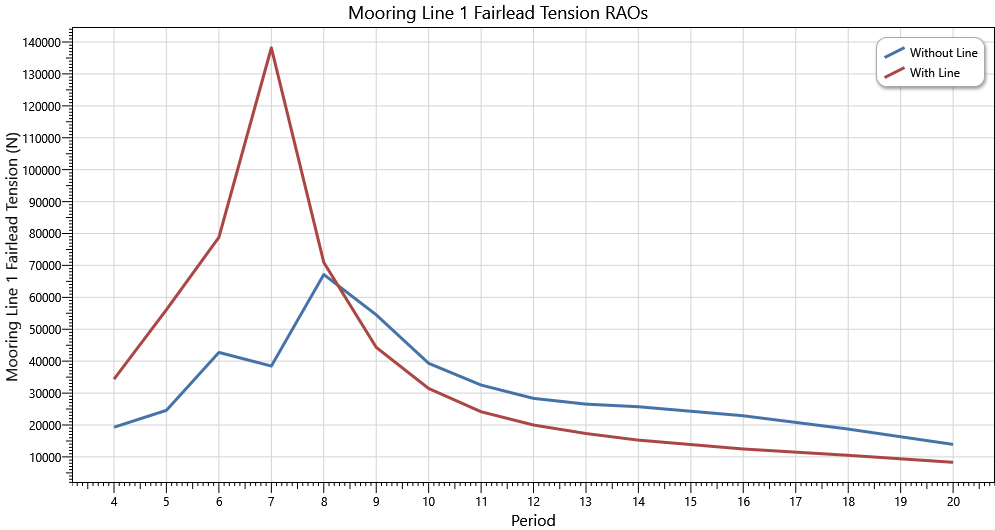Each dynamic analysis generates a summary output file, an example of which is shown in the table below – this one corresponds to the 20s period for the model including the offloading line.

Sample Summary Output File
Summary collation may be used to automatically present the RAO data shown below. The RAOs are based on the 'Range' parameter, as the regular waves have 0.5m amplitude in all the dynamic simulations. Some observations are as follows:
•Heave RAOs are generally larger with the presence of the steel transfer line. Additionally the RAO peak has shifted slightly from approximately 7s to 8s due to the steel transfer line.
•Surge RAOs are lower with the steel transfer line. The impact of this result is of particular significance for the detailed design of the transfer line itself. Because the transfer line is fatigue sensitive (particularly for seastates with lower peak periods) it is critical to identify the most appropriate RAOs for use in detailed design, in order to ensure feasibility. Unlike the case of heave, the natural period in surge does not occur in the wave frequency region.
•Pitch RAOs are generally reduced by the presence of the steel transfer line, particularly at the peak and surrounding frequencies. More pitch is introduced at lower frequencies but this is less critical.

CALM Buoy Heave RAOs

CALM Buoy Surge RAOs

CALM Buoy Pitch RAOs

Mooring Line 1 Fairlead Tension RAOs